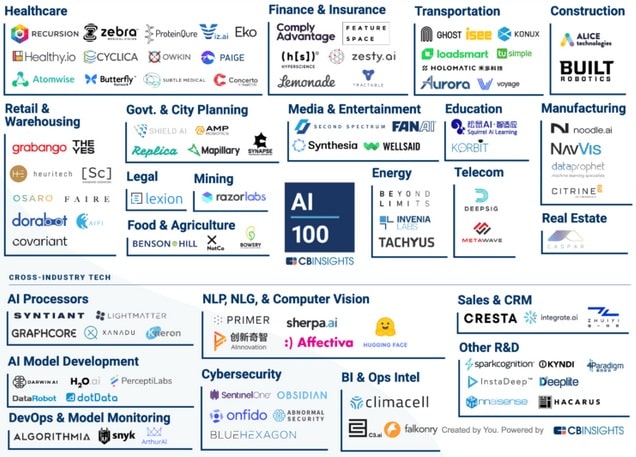
Researchers are exploring the world’s first virtual human cell, an AI-powered model designed to simulate the complex behavior of human biomolecules, cells, and tissues. This innovation could unlock new ways to understand the intricacies of biology and advance medical research. (Credit: Emma Lundberg)
Paper suggests ‘holy grail’ biotech could ‘revolutionize the scientific process’
STANFORD, Calif. — For centuries, scientists have peered through microscopes to understand the basic units of life. Now, they’re proposing something far more ambitious: creating complete virtual copies of human cells that can be studied, manipulated, and tested with the power of artificial intelligence.
In a game-changing vision published in Cell, scientists from Stanford University, Genentech, and the Chan Zuckerberg Initiative have proposed creating detailed digital replicas of human cells — what they call artificial intelligence virtual cells (AIVCs) — that could revolutionize how we understand biology and treat disease.
“The AIVC has the potential to revolutionize the scientific process, leading to future breakthroughs in biomedical research, personalized medicine, drug discovery, cell engineering, and programmable biology,” the authors write in a media release. “With a massive scientific undertaking and shared goals, open sharing of insights, and the power of safe, ethical, and reliable AI, we believe that we are stepping into a new era of scientific exploration and understanding.”
To understand why this is such a monumental undertaking, consider what makes cells so complex. Every human cell contains roughly 42 million protein molecules and 20,000 different genes, all interacting in intricate ways we’re still struggling to fully comprehend. These components don’t operate in isolation – they form vast networks of interactions that can dramatically change based on tiny alterations. It’s like trying to understand a city not just by mapping its streets but by tracking every resident’s movements and interactions simultaneously.
The Next Frontier In Biology
Traditional approaches to modeling cells have been like trying to write an instruction manual for this cellular city – scientists create rules based on what they observe and use mathematics to predict what might happen under different conditions. But cells often surprise us, showing remarkable resilience to some major disruptions while being surprisingly sensitive to seemingly minor changes.
Now, two revolutionary advances are converging to make virtual cells possible: the explosion of biological data collection methods and dramatic improvements in artificial intelligence. Modern laboratory techniques can generate enormous datasets about cellular components and behavior, with the volume of data doubling every six months.
To put this data explosion in perspective: the National Institutes of Health’s DNA sequencing database alone contains more than 14 petabytes of information – over a thousand times larger than the dataset used to train ChatGPT. Rather than trying to write rules to make sense of all this data, AI systems can learn patterns directly from it, much like how they’ve learned to recognize faces or generate human-like text.
The proposed AIVC would be like having a complete digital laboratory where scientists could conduct millions of virtual experiments. Instead of spending months growing cells and testing treatments one by one, researchers could rapidly simulate countless scenarios on their computers. This shift from in vivo (in living organisms) to in silico (computer-based) research could dramatically accelerate scientific discovery while reducing costs and ethical concerns associated with animal testing.
“Modeling human cells can be considered the holy grail of biology,” says Emma Lundberg, associate professor of bioengineering and of pathology at Stanford and a senior author of the paper, in a statement. “AI offers the ability to learn directly from data and to move beyond assumptions and hunches to discover the emergent properties of complex biological systems.”
Virtual Cells Could Yield ‘Digital Twins’
The potential applications of such a system could transform medicine as we know it. Imagine a future where doctors could create a “digital twin” of your cells – a virtual replica that would let them test different treatments on a computer before giving them to you. This could be particularly revolutionary for cancer treatment, where doctors could simulate how different combinations of drugs might affect your specific type of cancer cells, potentially avoiding harmful side effects and finding the most effective treatment more quickly.
However, the benefits would extend far beyond individual patient care. Cancer biologists could use these virtual cells to better understand how specific genetic mutations transform healthy cells into malignant ones. Developmental biologists could track how cells change as organisms grow, potentially uncovering new ways to treat birth defects or age-related diseases. Microbiologists could model viral infections to predict not just how viruses affect individual cells but how they might impact entire organs or systems.

To achieve these ambitious goals, the authors say the AIVC system needs to master three essential capabilities. First, it must create what they call “universal representations” – essentially a standardized way of understanding cellular behavior that works across different species and cell types, much like how we need common languages to translate between different human languages.
Second, it needs to accurately predict how cells will behave under different conditions, similar to how weather models predict storms. Third, it must serve as a guide for real-world experiments, helping scientists decide which physical experiments would be most valuable to conduct.
“This is a mammoth project, comparable to the genome project,” Lundberg notes, “requiring collaboration across disciplines, industries, and nations, and we understand that fully functional models might not be available for a decade or more.”
Just as the Human Genome Project requires scientists worldwide to work together to map our genetic code, creating virtual cells will demand unprecedented cooperation between biologists, computer scientists, mathematicians, and many other specialists.
A Scientific Revolution
The process would start at the molecular level, creating detailed AI models of how DNA, RNA, and proteins interact. These would then be integrated into larger models showing how entire cells function and eventually scaled up to show how cells work together in tissues and organs. It’s like building a city simulation that can zoom from showing individual houses to entire neighborhoods to the whole metropolitan area, with each level revealing new patterns and relationships.
The technical challenges are immense. Beyond just managing the massive amounts of data, scientists need to ensure these virtual cells accurately represent the incredible complexity of living systems. The authors emphasize that this must be an open-science effort, with all models and findings freely available to the entire scientific community. This approach ensures that researchers worldwide can contribute to and benefit from the project.
“With today’s rapidly expanding AI capabilities and our massive and growing datasets, the time is ripe for science to unite and begin the work of revolutionizing the way we understand and model biology,” Lundberg asserts.
This revolution could fundamentally change how we study life itself, offering new ways to understand disease, develop treatments, and unlock the mysteries of human biology.
Article: Scientists aim to build world’s first AI-powered virtual cell: 1000x more complex than ChatGPT


